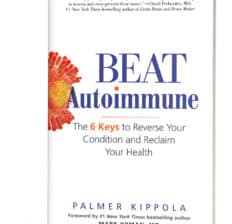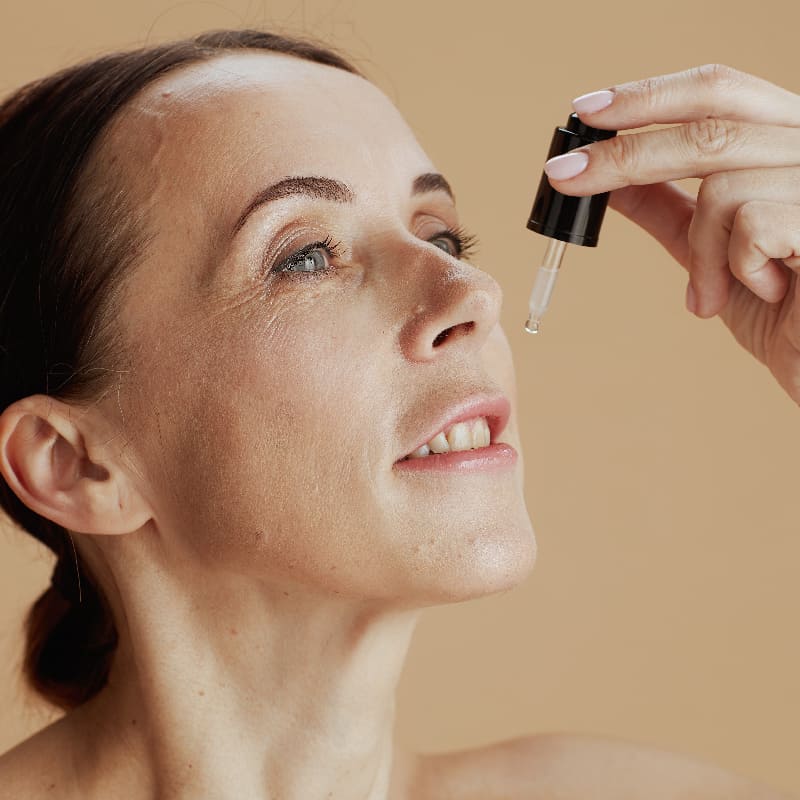This Dr. Axe content is medically reviewed or fact checked to ensure factually accurate information.
With strict editorial sourcing guidelines, we only link to academic research institutions, reputable media sites and, when research is available, medically peer-reviewed studies. Note that the numbers in parentheses (1, 2, etc.) are clickable links to these studies.
The information in our articles is NOT intended to replace a one-on-one relationship with a qualified health care professional and is not intended as medical advice.
This article is based on scientific evidence, written by experts and fact checked by our trained editorial staff. Note that the numbers in parentheses (1, 2, etc.) are clickable links to medically peer-reviewed studies.
Our team includes licensed nutritionists and dietitians, certified health education specialists, as well as certified strength and conditioning specialists, personal trainers and corrective exercise specialists. Our team aims to be not only thorough with its research, but also objective and unbiased.
The information in our articles is NOT intended to replace a one-on-one relationship with a qualified health care professional and is not intended as medical advice.
Want to Beat Autoimmune Disease? Learn How to Prevent or Overcome Infections
April 4, 2019

The following is an adapted excerpt from Beat Autoimmune, The 6 Keys to Reverse Your Condition and Reclaim Your Health, by Palmer Kippola with foreword by Mark Hyman, MD (Kensington Books). Palmer is a Functional Medicine Certified Health Coach who reversed her MS by removing her inflammatory root causes and healing her gut. She has created a framework for healing and preventing autoimmune conditions called F.I.G.H.T.S.™ which represent the root cause categories we can control: Food, Infections, Gut health, Hormone balance, Toxins and Stress. This excerpt focuses on one of the six keys: Infections.
Many experts believe that if you have an autoimmune condition, you almost certainly have an infection, too. Growing scientific evidence indicates that chronic infections from bacteria, viruses, parasites and fungi are a big contributing factor in the development and exacerbation of autoimmune conditions.
Whether an infection precedes your autoimmune diagnosis or autoimmunity opens the doors to infections, any infection can make a bad situation worse, stressing an already overworked immune system and exacerbating or perpetuating autoimmune conditions.
The Pathway to Problems: A Malfunctioning Immune System
The immune system acts as our armed forces, protecting us from harmful invaders. When it functions properly, we are resilient against infections like the common cold and even Lyme disease. But modern lifestyle factors — like a diet of sugar and refined grains, poor sleep, minimal movement, excess stress and environmental toxins — burden our immune system and make us more prone to immune dysfunction and autoimmunity.
It won’t come as a surprise to you that a malfunctioning immune system is fertile ground for infections. You may have noticed that a particularly stressful time can be the perfect opportunity for a new infection to take up residence, like the common cold or a sneaky dormant infection, like Epstein-Barr virus (EBV) — the culprit responsible for mononucleosis (mono) — to reactivate and wreak havoc on your body. And once your immune system mounts a reaction to the infection, it produces a huge amount of inflammation, creating a prime environment for autoimmune conditions to emerge or worsen.
Women are more vulnerable to the consequences of infections than men. Women’s bodies mount a faster and stronger immune system attack to clear infections — and the resulting inflammation that floods their systems increases their risk of autoimmune troubles. Beyond gender, the following factors weaken immunity, and in combination, increase the risk of infections and autoimmune conditions in predisposed people:
- Inflammation – Sources of inflammation include environmental toxins, Standard American Diet (SAD) foods, nutrient deficiencies, poor sleep, lack of exercise, chronic stress and, of course, infections.
- Insulin Resistance – People who are insulin resistant, pre-diabetic and diabetic are more prone to infections.
- Imbalanced Hormones – Hormonal events like puberty, pregnancy, perimenopause, menopause, thyroid dysfunction, estrogen dominance and insulin resistance contribute to the set up for autoimmune issues.
- Hypometabolism – Aging, underactive thyroid, and/or a heavy toxic load can cause a slow (hypo) metabolism which weakens your immune response, lowers your core body temperature and makes you more vulnerable to all types of infections.
Related: What Exactly Does It Mean to Be Immunocompromised?
How to Make Yourself More Resistant to Infections
It may be tempting to think that eliminating an infection will resolve your autoimmune condition. However, attacking the infection alone does not address the underlying reasons that your immune system was unable to fend off the infection in the first place. Revving up your metabolism and embracing healthy lifestyle practices will strengthen your natural defenses and allow an overtaxed immune system to rest and recharge.
Step One: Raise Your Metabolism
People with autoimmune conditions typically suffer from a sluggish metabolism — a depleted energy state called hypometabolism. It’s like your body’s energy-producing mitochondria and thyroid (the “gas pedal gland”) have both gone on strike. You feel tired, cold and seem unable to lose weight.
Being in a hypometabolic state not only decreases your vitality, it decreases the robustness of your immune system. If you think your metabolism needs a boost, give these strategies a try:
1. Breathe deeply, slowly and intentionally several times per day.
Conscious breathing is one of the easiest and most deceptively simple ways to raise your metabolism and relax at the same time.
Give it a try: Take 10 conscious breaths with a 1-4-2 ratio. For example, inhale for four seconds, hold for 16 seconds and exhale for eight seconds. Do three rounds of 10 breaths a few times per day. For more information on breathing to boost your metabolism, check out Pam Grout’s Jumpstart Your Metabolism: How to Lose Weight By Changing the Way You Breathe.
2. Use red lights when it’s dark out.
Standard artificial lights emit a blue wave spectrum, which if you are exposed to in the evening and early morning, suppresses melatonin, harming your circadian rhythm and keeping you in a hypometabolic state. (1)
Give it a try: Replace your bedside lamp with a red LED bulb from Amazon for $5–10 and get a red night light for bathroom use; install the free light-dimming software F.lux on your electronic devices, wear “blue blocker” glasses at home in the evening and make it a ritual to get some morning sun soon after waking.
3. Dip into ketosis periodically.
The ketogenic diet, a high fat, moderate protein, low-carb diet (roughly 70 percent fat, 25 percent protein and 5 percent carbs) helps to lower inflammation, reverse insulin resistance, improve brain function and energy levels, and even helps you detoxify from heavy metals.
Give it a try: For a full keto guide, check out Dr. Axe’s Keto Diet: Your 30-Day Plan to Lose Weight, Balance Hormones, Boost Brain Health, and Reverse Disease.
4. Practice intermittent fasting.
Studies confirm that going without food periodically has numerous health benefits like improving insulin sensitivity, boosting metabolism, and increasing energy levels. (2)
Give it a try: To ease into it, allow 15 hours between dinner and breakfast (that means zero calories) a few times per week. Or try skipping dinner a few times a week and just eat breakfast and lunch.
5. Exercise, especially these three types can have both short- and long-term effects on your metabolism.
First of all, resistance training with heavy weights produces active muscle tissue, which is more metabolically active than fat, helping you burn more calories even at rest.
Secondly, high-intensity interval training (HIIT) and high-intensity interval resistance training (HIRT), like fast circuits at the gym, are efficient ways to rev up your metabolism. Third, moderate cardio in a fasted state, for example first thing in the morning, has been shown to offer superior metabolic effects than exercising after eating. (3)
Give it a try: If you are able, do Dr. Izumi Tabata’s 12-minute HIIT protocol: 20 seconds of all-out effort (e.g., sprint, high step, jumping jacks) and then rest for 10 seconds. Repeat eight times, and you’re done! You can find four- and 10-minute Tabata workouts for beginners on YouTube.
6. Take cold showers routinely to help boost your metabolism.
Like fasting, cold water immersion has a “hormetic effect” — meaning a little bit of stress has a beneficial effect. Not only does cold water force your body to work harder to keep you warm, thereby burning more calories, it also activates healthy brown fat that helps to eliminate harmful adipose (white) fat.
Give it a try: Alternate 20 seconds of hot and 20 seconds of cold water in the shower for a few minutes.
Step Two: Unburden Your Immune System
Your immune system is your most powerful curative system … when it’s working properly. A well-functioning immune system is balanced and resilient, fending off infections as needed, not overreacting to foods and other harmless environmental factors like pollen, or attacking your own bodies in an autoimmune response.
The good news is that the body has an innate regenerative ability, and your immune system can be nudged toward balance within just days or weeks simply by removing sources of inflammation and adopting nourishing lifestyle habits:
1. Remove processed foods, sugar and starchy carbs
Microbes love sugar; your immune system does not. Studies show that sugar in all forms (glucose, fructose and sucrose) suppresses immune function for five hours after eating it. (4) To make yourself inhospitable to infectious microbes and improve your immune function, stop feeding the microbes.
2. Add immune-enhancing foods
A wide body of scientific evidence shows that garlic and ginger offer powerful anti-inflammatory and antimicrobial properties — even against drug-resistant pathogens. Coconut oil has been shown to control the fungal pathogen Candida albicans. Curcumin, the yellow-orange pigment from the turmeric root, has been shown to modulate the immune system and improve autoimmune conditions. Finally, fermented foods, like sauerkraut and kimchi, are anti-microbial and immune-enhancing. (5, 6, 7, 8)
3. Supplement strategically
More than 148 studies show that vitamin C (also known as ascorbic acid) may alleviate or prevent infections caused by viruses, bacteria and protozoa. Take 2,000–5,000 milligrams [ideally corn-free] vitamin C per day in divided doses, with or without food.
Vitamin D3 has been shown to modulate the immune system and protect against autoimmune conditions; whereas low levels of vitamin D are associated with increased infection and autoimmune disorders. Get your D levels tested and aim for levels of 70–100 ng/ml to heal from or prevent autoimmune conditions with 5,000–10,000 IU vitamin D3 in the morning. D3 is most beneficial when taken the same day as vitamin K2 to help get calcium into the right places, like your bones and not into the wrong places, like your arteries.
Zinc is an essential element that supports immune function and infection-resistance; and correcting zinc deficiencies may improve symptoms of autoimmune and other diseases. Take 30 milligrams of zinc per day with food — either at one time or in divided doses; and take 2 milligrams of copper to balance 30 milligrams of zinc. Probiotics including Lactobacillus, Bifidobacterium and Saccharomyces species have been found to have a beneficial, modulating effect on the immune system.
4. Get restorative sleep
Fewer than six hours of sleep per night suppresses immune function, turns on inflammatory genes and increases risk of obesity, type 2 diabetes and cardiovascular disease (CVD). The immune system functions best when you get enough sleep. Eight or more hours may be ideal for anyone with a chronic health condition.
5. Move more
They say, “sitting is the new smoking,” and science is backing that up regarding sedentary lifestyles. A review of 18 studies found that those who sat for the longest periods of time were twice as likely to have diabetes or heart disease and had a greater risk of death compared to those who sat the least. (9)
Moderate daily exercise, as in 40 minutes of walking most days, reduces systemic inflammation and incidence of upper-respiratory illness (URI). (10) Because sitting for two hours can undo 20 minutes of exercise benefits, make sure you stand and move throughout the day, even if it means using a reminder app like Move, Stand Up or Awareness.
6. Minimize stress
Chronic stress has negative effects on almost all functional measures of the immune system. Do what you can to eliminate unnecessary stressors and find healthy ways to relax, like soaking in a hot Epsom salts bath, laughing and slow, conscious breathing, which has been proven to reduce stress and lower inflammation.
Final Thoughts
As you improve your metabolism and adopt healthy lifestyle habits, you’ll be shifting your terrain for the better and your immune system can often eliminate — or at least reduce the magnitude of — persistent infections on its own. By proactively working to clear infections, you are taking a critical step in reversing and preventing autoimmune conditions.
 Get Your Free Gift. Palmer beat autoimmune, and you can too! Do you have an autoimmune condition or are you struggling with mysterious symptoms? Healing starts with what you eat. Click here for a complimentary copy of Palmer’s Optimal Food Guide, which will help you identify your trigger foods, discover your optimal foods and embrace healthy food habits for life!
Get Your Free Gift. Palmer beat autoimmune, and you can too! Do you have an autoimmune condition or are you struggling with mysterious symptoms? Healing starts with what you eat. Click here for a complimentary copy of Palmer’s Optimal Food Guide, which will help you identify your trigger foods, discover your optimal foods and embrace healthy food habits for life!














